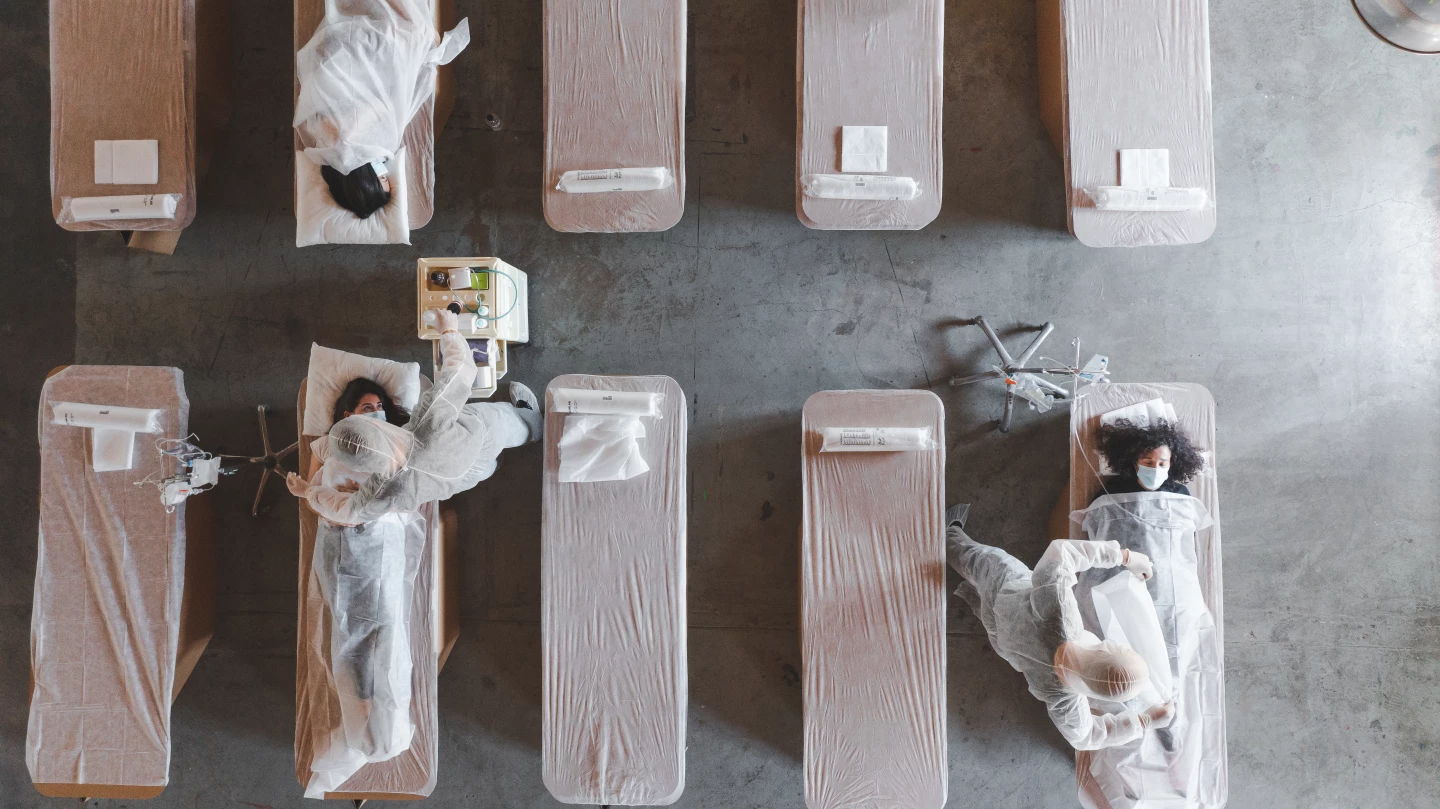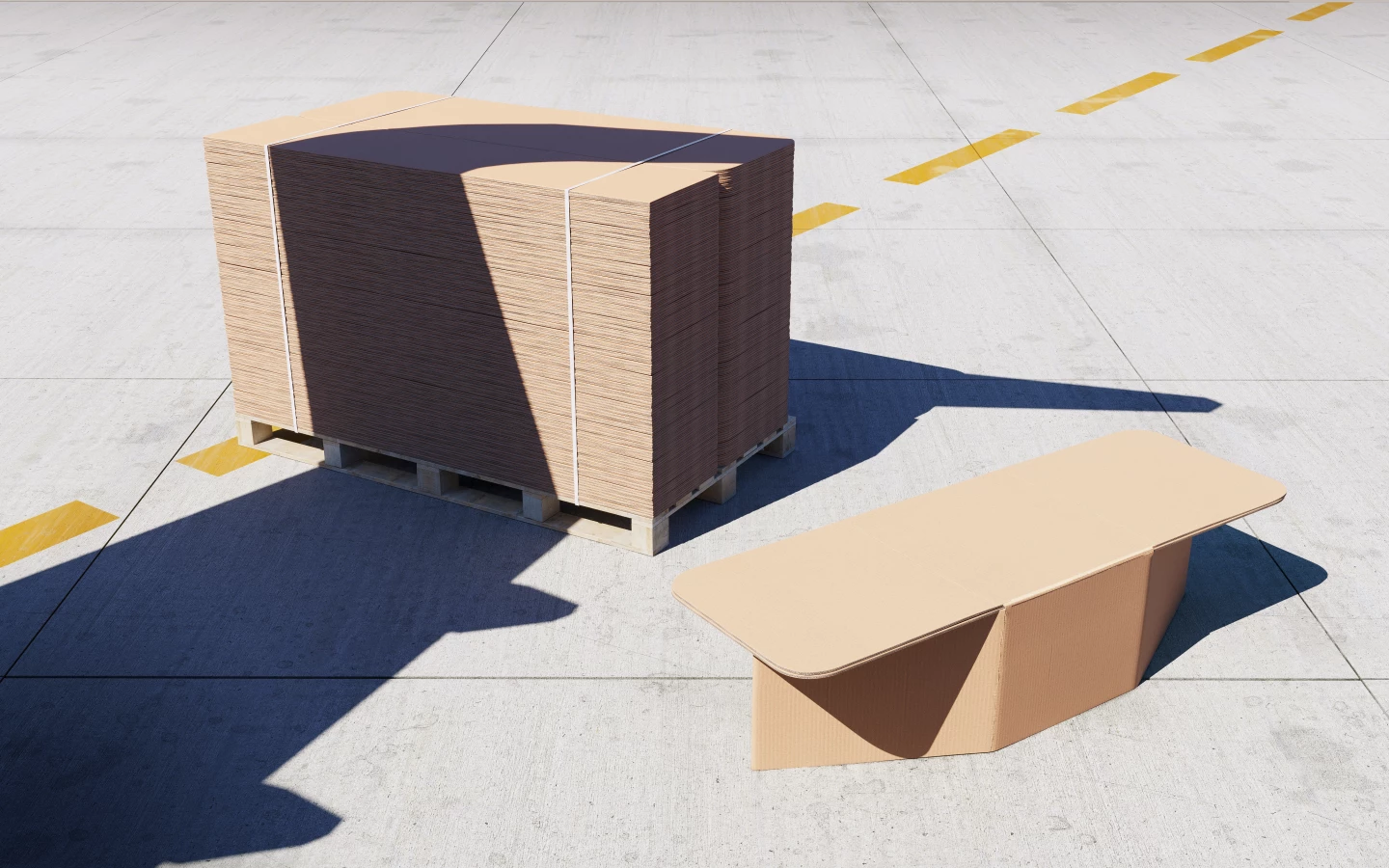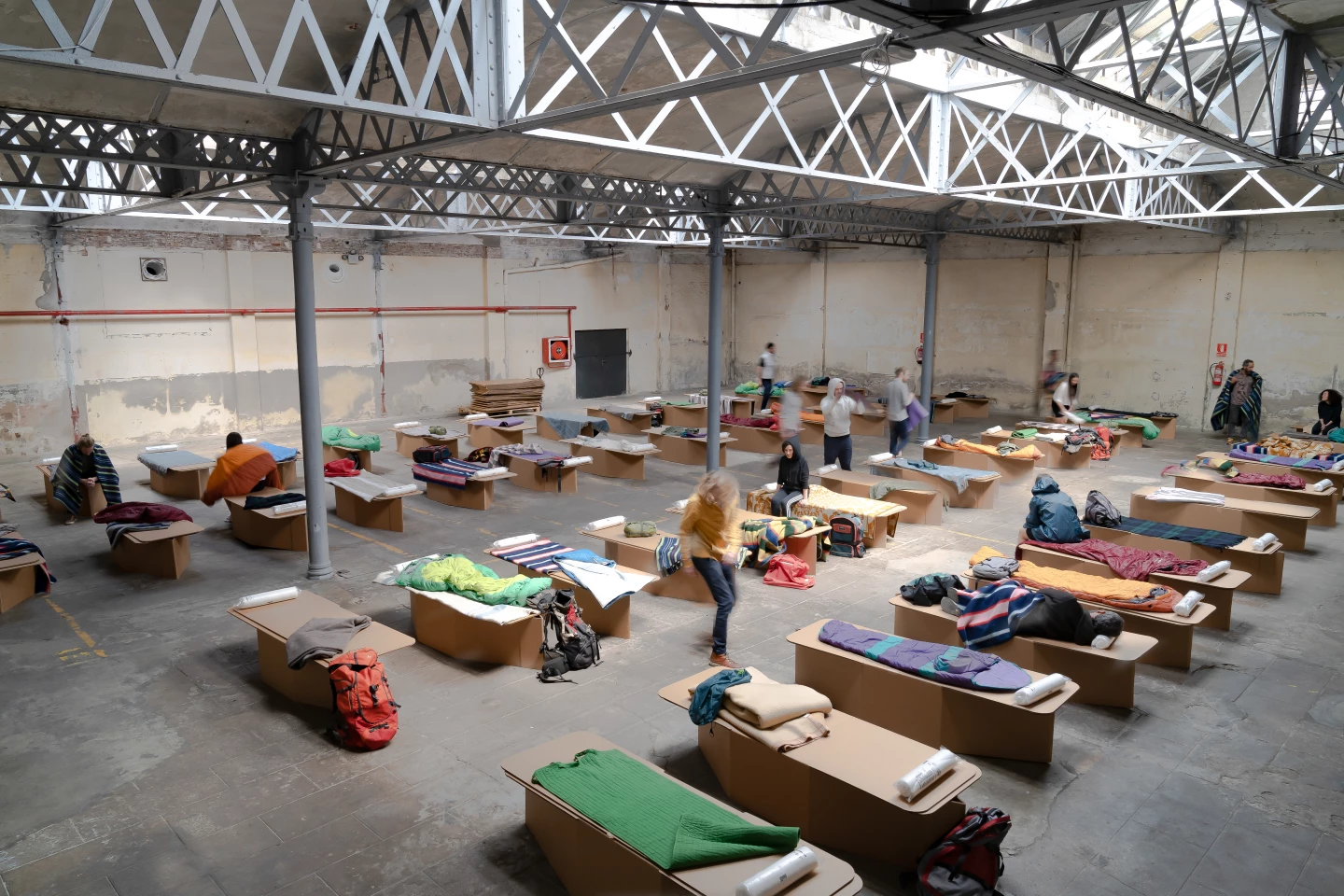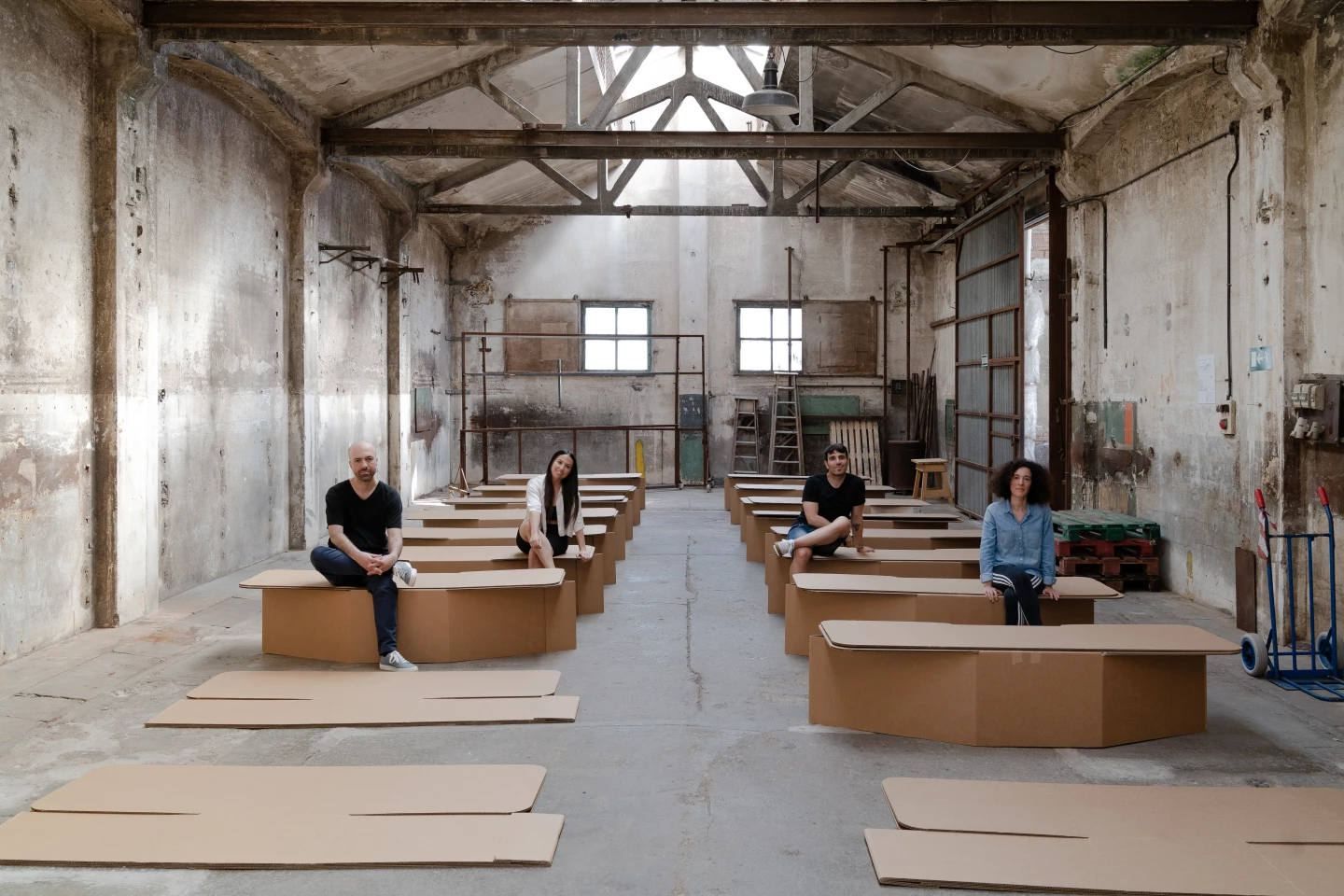As technology continues to offer new capabilities, the old adage that “there is always a better way” is becoming increasingly true, and sometimes it just requires a multi-disciplinary approach to a problem to transform the effectiveness of the solution. Humanitaria’s first invention already promises to reap untold efficiencies for mankind in a scenario we are increasingly likely to encounter as climate change accelerates the incidence of cascading catastrophic disasters of Biblical proportions.
Humanity has a problem. In 2022, we collectively surpassed the 100 million mark for the number of forcibly displaced people on Planet Earth. It's an all-time record but not one we can be proud of, as it's the highest number of displaced people in history, and more than double the number of just a decade ago.
When a major war permeates global thinking, more money goes to defense spending and public confidence plummets, fear takes over, people give less and ... the UNHCR global budget for humanitarian aid barely covered 46% of needs before the current crisis, and the deficit has been worsening every year for 14 years, reaching a record deficit of US$20.5 billion in 2022.
How the bottom half lives is a key performance indicator of our level of civilization and we are failing abysmally. Those who are attempting to redress the deficit are to be applauded and Spanish start-up Humanitaria is worthy of your attention and support.
Humanitaria was founded by Barcelona-based Juan Sanz and J. Alberto Paniagua with the aim of using the pair's 20+ years of industrial design experience to improve the response capacity of NGOs in humanitarian situations.
The startup was initially assisted by the UNICEF Lab acceleration program, became a finalist in the Red Cross Humanitarian Technology Awards and was selected as one of the six social innovation proposals aspiring to the 2022 Magellan-Elcano Humanitarian Innovation Award.
By way of explanation for the prestige associated with the Magellan-Elcano award in Spain, the Spanish Magellan expedition set out on 20 September 1519 under Ferdinand Magellan to find a western route to the Moluccas (Spice Islands), returning under Juan Sebastián Elcano (after Magellan's death), crossing the Atlantic, Pacific, and Indian oceans, and culminating in the first circumnavigation of the world. There is no higher honor for innovation in Spain.
Juan Sanz is a name that you will probably hear again, as he and Alberto Paniagua are quickly building formidable credibility for the practical solutions to real world problems they can conjure that can make a massive difference to millions of disenfranchised people.
Why innovate in humanitarian equipment?

Sanz takes up the story: "Because humanitarian equipment represents more than 40% of global humanitarian aid spending. It is the work tool of all NGOs. If we can bring a super-efficiency to humanitarian equipment through simple improvement, we can democratize humanitarian aid, and we can make it embraceable by large and small organizations.
"In these two years, with the help of a still small but very committed team, we have developed our first product: the low-cost humanitarian bed. An essential piece of equipment in every humanitarian organization, which reduces the purchase price of the equipment by 80-90%, and at the same time improves the performance metrics of the organization in operation: delivery times, transportation, assembly time, management of the equipment... it is equipment designed from scratch with a single purpose: to offer maximum efficiency at minimum cost, to multiply the resources of humanitarian organizations. That's why!"
Sanz (who still earns his own living as a professional communicator while performing pro-bono CEO functionality for a humanitarian aid company) is correct: beds are the largest item in the annual budget of NGOs.
In fact, the beds used by NGOs all over the world are still camping beds with an average price between €100 and €200 (US$110 to $220) EACH, and because no-one had ever looked at it logically before, they take between five and 20 minutes each to assemble and are not suitable for transport in large quantities.
Can a cardboard bed be "fit for purpose"?

In Humanitaria's cardboard bed design, the cardboard bed can support up to 350 kilograms of weight, well above the 150 kilograms supported by the usual camping beds used by NGOs.
"The cost of 1,000 beds for a refugee camp ranges from €100,000 to €200,000 (US$110 to $220) and it takes up to two weeks to produce them, another two weeks to ship them (by land or sea) and more than 24 hours to install and set them up”, said Juan Sanz, Humanitaria’s CEO.
By comparison, he explained, “… with Humanitaria, 1,000 beds cost €16,000, can be shipped folded by plane and can be set up in 20 minutes."

In terms of production, the cardboard bed represents a cost reduction of 90% compared to the price of other humanitarian beds. The cost per unit is around 16-17 euros and is 99% more efficient than any of the solutions commonly used by NGOs around the world.
Only 46% of humanitarian emergencies worldwide receive aid from international NGOs. And the worsening international environmental and political situation increases this gap between needs and humanitarian response every year.
"By reducing the cost and increasing the efficiency of the equipment, we make it accessible to as many organizations as possible, who will be able to help more people. We are just one part of a whole," said Sanz.
The benefits of the packaging industry applied to humanitarian equipment

The material and design of the bed takes advantage of packaging technology: simplicity, speed of assembly and a high rate of manufacture.
"With the Humanitaria bed, we have a production speed of 1,000 units per hour in 24-hour shifts. Thanks to the automation of the packaging industry, any average factory can manufacture these beds at a rate that is light-years ahead of any other solution. This allows us to respond to any peak demand without stock-outs or impossible lead times, as happened with the Asian supplier network during the pandemic," according to Sanz.
The speed of assembly is a record in the social sector: a system that starts from an extra-flat sheet and transforms into a bed in less than 5 seconds, a task that a single person can perform autonomously, without tools or prior training. "It is between 60 and 200 times faster than any alternative used in humanitarian emergencies, greatly shortening the time it takes to set up a field hospital, reducing the number of staff and associated costs. A single person can set up 700 beds in one hour. Simply opening the bed like a cardboard box. Which is what it is, in short”, explained Humanitaria’s CEO.
High strength and durability

Cardboard is the cheapest structural and durable material there is. It lasts long enough to cope with a humanitarian emergency. "It is a fast, versatile and cost-effective solution. It can double the approved strength of a humanitarian bed and provide comfort and shelter in a time of high vulnerability. People can't believe it when they see five people standing on our bed," argues Héctor Muñoz, head of manufacturing.
"Those who question the durability don't understand the approach of this product. It is the fastest, most pluralistic and most economical solution. It was not in our plans to design a product that would last 10 years in perfect condition. Even so, we doubled the approved resistance for a humanitarian bed," added Muñoz.

The Humanitarian bed is intended to be the essential resource for this first humanitarian response "offering a safe place for hundreds of thousands of people seeking shelter and a living space that meets the guarantees of safety, comfort and quality at the lowest possible cost. A decent bed on which to sleep and find healthcare".
For this important work, Humanitaria has already provided a super-efficient tool. The first few hundred units of the bed are being readied for testing during the rescue operations planned by the Spanish Red Cross the (Northern Hemisphere) autumn of 2023.
Humanitaria was founded in Barcelona by Juan Sanz and J. Alberto Paniagua with the aim of using their more than 20 years of respective experience in industrial design and strategic consultancy in sectors such as the automotive industry to improve the response capacity of NGOs in humanitarian situations. The startup was a finalist in the Red Cross Humanitarian Technology Awards and was selected as one of the six social innovation proposals aspiring to the Magellan-Elcano 2022 Humanitarian Innovation Awards.
Humanitarian Technology Awards: recognizing social innovation

The opportunity for creatively repurposing existing technology to build opportunities in humanitarian pursuit is immense and the Humanitarian Technology Awards are designed to recognize and promote social innovation internationally.
Over the past eight years, the Humanitarian Technology Awards have promoted some fascinating and empowering ideas, prototypes, and solutions such as the Oasis Project (tools for teachers for youth homelessness education), Visualfy (empowering deaf people with technology), Tresdesis (assistive technology), Hiveonline (connecting the informal African economy), Ecolana (digital tools to facilitate recycling), Shopping with Purpose (intelligent revue generation for NGOs), Teacher AI (empowering educators with Artificial Intelligence), Comgo ( third sector impact measurement), Croix-Rouge Insertion (developing sustainable employment for the most disadvantaged) and Missing Maps (preemptively mapping regions that are vulnerable to natural disasters, conflicts, and disease epidemics).
These projects have proven their worth by addressing significant social challenges and creatively using technology to make a positive impact on communities.
The 2024 Humanitarian Technology Awards close on 10 November 2023 and registration is already open.
Source: Humanitaria.es (Phone: +34 696 859 127 Email: hola@humanitaria.es)











